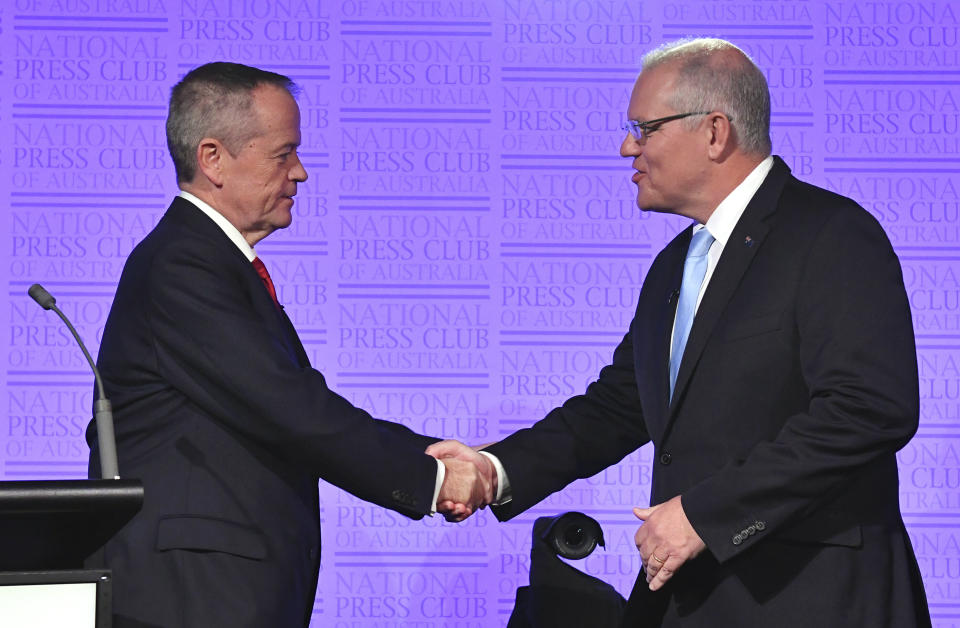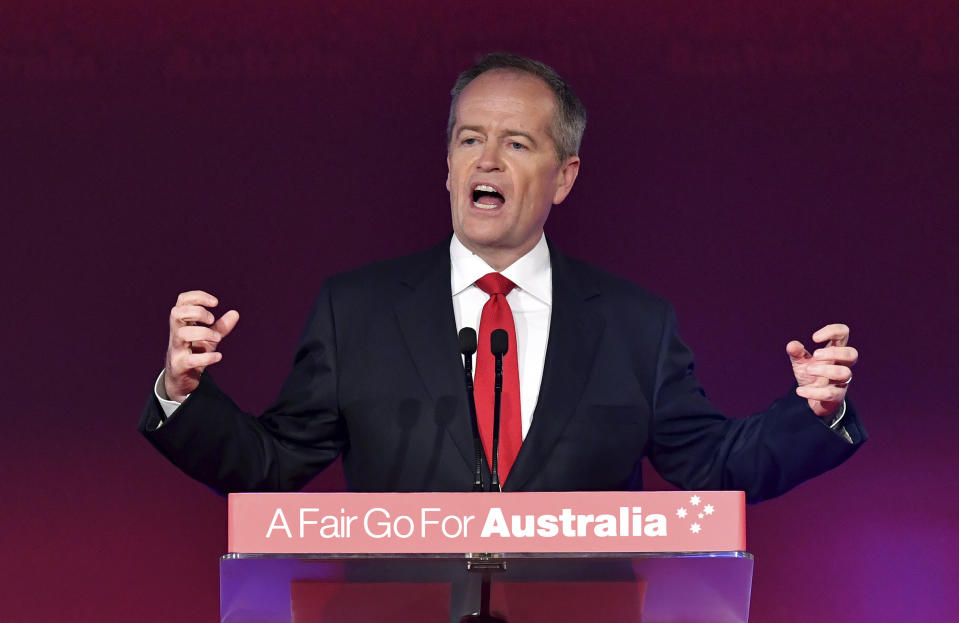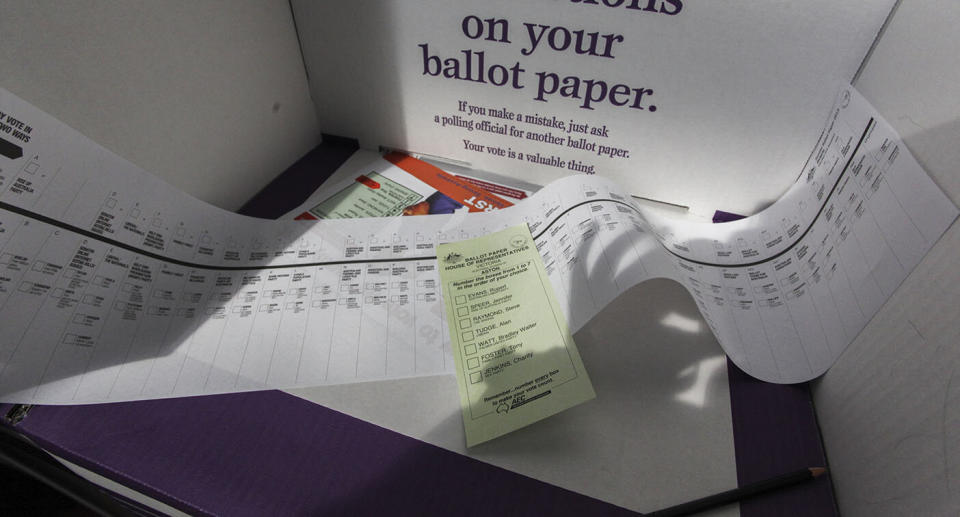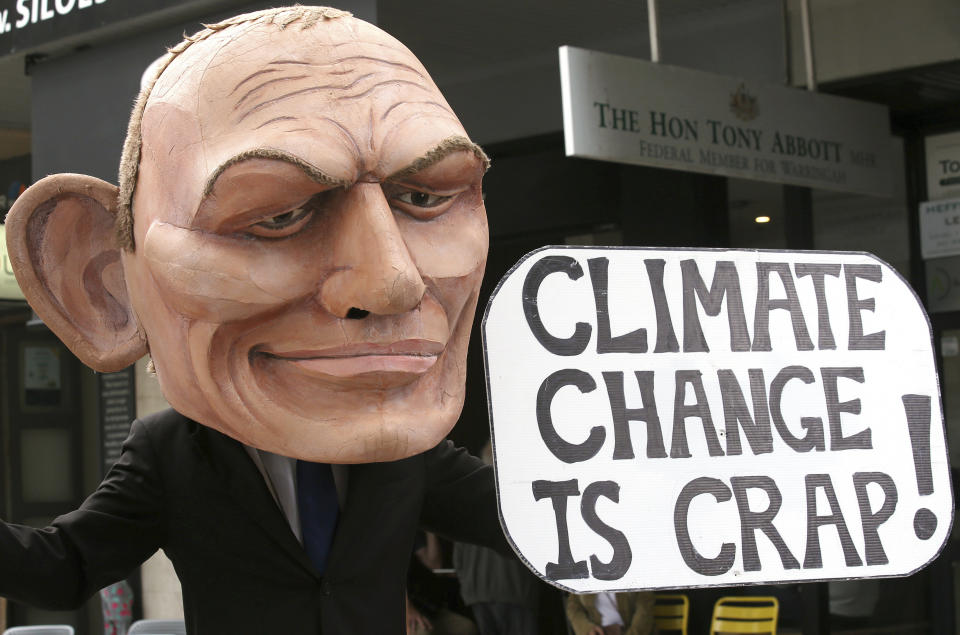Everything you need to know about 2019 Federal Election
After a gruelling five-week campaign the federal election to select the members of the 46th Parliament of Australia will take place today.
Voting is compulsory in Australia – and you could be fined for not having your say.
So to make the process simpler, we’ve answered some of your questions about the pending election, and what you can expect when placing your vote.
Where can I vote?
In each state, voting will open from 8am. Every electorate will have polling places set up at schools, libraries, churches or community halls. To find your closest polling booth, enter your address here.
Voting closes at 6pm sharp in each state’s local time.

On the AEC website, you’ll also be able to view a list of candidates for your electorate, so you can be as prepared and informed as possible when casting your vote.
If you’re visiting another state or territory on election day, you can still vote, however it must be at a designated interstate voting centre. All interstate voting centres are open from 8am to 6pm (local time).
Find your closest centre here.
Can I vote online?
In Australia, online voting currently is not available.
In state elections, online voting is allowed using iVote, but restrictions do apply.
You can only use iVote if you are blind or have low vision, if you are unable to vote unassisted, if you live more than 20km from a voting centre or will be interstate or overseas on election day.

Early voting has already closed, but according to the Australian Electoral Commission (AEC), almost double the number of people have voted early compared to that of the last federal election in 2016.
More than four million Australians had voted as of Friday morning, with 533,000 alone voting on Thursday.
How to vote
Inside the polling place, you will receive two ballot papers – one for the House of Representatives and one for the Senate.
The House of Representatives ballot paper is a smaller, green form. You will be required to number ALL the boxes in the order of your choice.
If you leave the form blank or use ticks and crosses instead of numbers, your vote will be considered ‘informal’ and will not count.
For the senate vote, you will receive a larger, white ballot paper. There are two ways to vote on this form – either above the line or below the line.
If you choose to vote above the line, you must number at least six party boxes from 1 to 6 in the order of your choice.
If you vote below the line, you will be required to number at least 12 boxes in the order of your choice.
In the latter option, you will be putting numbers against the names of the candidates for each party. While you must number at least 12, you can continue to write numbers in as many boxes as you like.
You can practise filling out the Senate and the House of Representatives forms on the AEC website.

Where can I get a sausage after my vote?
A huge perk of voting in elections is the sausage sizzle that usually takes place at the polling place .
If you’re unsure whether your location will have a barbecue fired up, there’s an easy way to find out.
One website has mapped every polling location around the country and lists whether there will be sausages. Check it out here.
Who is predicted to win the Federal Election?
Australia is expected to get its sixth prime minister in six years, with opinion polls pointing to a narrow victory for Bill Shorten's Labor team in today’s federal election.
While the death of Labor hero Bob Hawke at the age of 89 sparked an outpouring of grief and tributes, it has inspired party faithful to try to achieve history – by Mr Shorten becoming only the fourth Labor leader to win power from opposition since World War II.
Polls suggest Labor could make a net gain of 12 seats, giving it 81 MPs in the 151-seat parliament.
The final Newspoll of the campaign has Labor ahead of the coalition 51.5 to 48.5 on a two-party preferred basis, while the latest Ipsos poll shows Labor in front 51-49.
The biggest swings are expected in Victoria and Western Australia.
Forty Senate seats are also up for grabs, with Labor and the coalition expected to win most, but minor parties including the Greens, Centre Alliance, One Nation, the United Australia Party and Australian Conservatives are also in the running.
Mr Shorten ditched an election eve plan to campaign through Queensland on Friday, instead visiting the late prime minister Mr Hawke's widow Blanche d'Alpuget in Sydney.
"Blanche said that nothing would make Bob happier than Labor forming a government (Saturday) night," Mr Shorten told reporters.

"I'm confident Labor will win ... because we've got a positive plan for real change, to stop the chaos."
Prime Minister Scott Morrison, who only took over the Liberal leadership from Malcolm Turnbull in August, hit four marginal seats in one day in a last-ditch attempt to shore up votes.
Noting the Liberals' poll deficit had been much wider in earlier months, Mr Morrison said it would be the closest election in many years.
"I don't think anyone who has been following me around the country for these last five weeks, five weeks ago thought this is where the election would be the day before."
Mr Morrison, who has governed in minority since taking the reins, has to win a net two seats just to retain power.
The Liberal campaign has focused on economic management, while taking aim at Labor's plan to reform negative gearing and franking credits as well as boost the nation's ambition on carbon emission cuts.
Labor has spent most of its time talking about health, climate, education and the need to make the tax system fairer, while highlighting leadership chaos in the Liberals.
Both major parties are promising to deliver a federal budget surplus in the coming financial year - the first in 12 years - and keep the books in the black in future years.
What are the policies of the Labor and Liberal parties?
Labor leader Bill Shorten has toughened his stance on climate change, labelling it an emergency he vows he will prioritise if he becomes prime minister.
"I promise we will send a message to the world that when it comes to climate change Australia is back in the fight," he said in his final major election speech in Blacktown on Thursday.
Labor's policies include a 45 per cent emissions reduction target on 2005 levels by 2030 as well as a 50 per cent renewable energy target.
The opposition has been hounded on the cost of its targets by the Liberal Party, which has a 26 to 28 per cent emissions reduction target from the same baseline.

Prime Minister Scott Morrison says his approach to the issue is economically responsible, but would also end the "climate wars" within the Liberal Party.
In short, Labor also plans to make childcare more affordable, scrap negative gearing for properties bought after January 2020 and open Australia’s doors to 8,250 more refugees per year.
If the Liberals were to be re-elected, they’ve promised to tackle post-natal depression and domestic violence, and will cut the amount of migrants down by 30,000 per year.
There’s also plans to cut personal income taxes for all individuals earning up to $126,000 per year.
Find a more detailed breakdown here.
Issues that mostly went ignored in the 2019 campaigns were foreign policy, refugees and border security, poverty, our Indigenous communities and power prices.
- With AAP
Do you have a story tip? Email: newsroomau@yahoonews.com.
You can also follow us on Facebook, download the Yahoo News app from iTunes or Google Play and stay up to date with the latest news with Yahoo’s daily newsletter. Sign up here.




